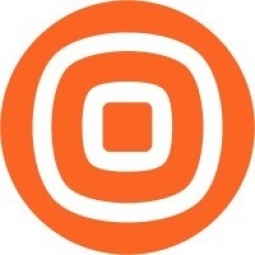Technology Category
- Networks & Connectivity - 5G
- Sensors - Lidar & Lazer Scanners
Applicable Industries
- Cities & Municipalities
Applicable Functions
- Sales & Marketing
Use Cases
- Demand Planning & Forecasting
- Smart Campus
Services
- Cloud Planning, Design & Implementation Services
About The Customer
Enrich is the largest chain of CoCo (Company Owned & Operated) hair & beauty salons in India. With nearly 2,000 employees and 83 salons across six cities, they serve 130,000 unique customers every month. They are the largest chain of their kind in Mumbai, Pune, Ahmedabad, Bengaluru, Vadodara, and Surat, and have ambitious growth plans. They have been awarded the Best Regional Salon Chain of the Year for three consecutive years, and have also been recognized for their digital marketing, regional retailing, and IT impact.
The Challenge
Enrich, the largest chain of CoCo hair & beauty salons in India, faced a significant challenge when the demand for their services increased, leading to a surge in calls to their central line. The salon's agents were overwhelmed, and the company sought a more efficient way to communicate with customers and improve their experience, particularly for home salon clients and appointment booking agents. A survey revealed that 83% of clients preferred chat support for scheduling appointments over phone calls. The global pandemic and lockdown further complicated matters, necessitating a solution that could automate the appointment scheduling process and provide effective customer support remotely.
The Solution
Enrich introduced WhatsApp as a new customer communication channel using Infobip’s cloud contact center solution, Conversations, given the platform's popularity in the region. They created 87 queues, one for each location, to route customers to the right agent based on their chosen city and salon. To automate the appointment scheduling process, Enrich built a self-service chatbot on WhatsApp. They also set up a Click to WhatsApp campaign to raise awareness for their new communication channel. When the global pandemic hit, Enrich used WhatsApp to stay connected with customers remotely, sharing beauty tips and enabling purchases through the chat app. Once the lockdown was lifted, they used WhatsApp to share store opening information, working hours updates, and to send surveys to track customer satisfaction.
Operational Impact
Quantitative Benefit

Case Study missing?
Start adding your own!
Register with your work email and create a new case study profile for your business.
Related Case Studies.

Case Study
Turning A Stadium Into A Smart Building
Honeywell created what it called the “intelligent system” for the National Stadium in Beijing, China, turning the venue for the opening and closing events at the 2008 Summer Olympics into a “smart building.” Designed by highly controversial artist Ai Weiwei, the “Bird’s Nest” remains one of the most impressive feats of stadium architecture in the world. The 250,000 square meter structure housed more than 100,000 athletes and spectators at a time. To accommodate such capacity, China turned to Honeywell’s EBI Integrated Building Management System to create an integrated “intelligent system” for improved building security, safety and energy efficiency.
.png)
Case Study
Smart Street Light Network (Copenhagen)
Key stakeholders are taking a comprehensive approach to rethinking smart city innovation. City leaders have collaborated through partnerships involving government, research institutions and solution providers. The Copenhagen Solutions Lab is one of the leading organizations at the forefront of this movement. By bringing together manufacturers with municipal buyers, the Copenhagen Solutions Lab has catalyzed the development and deployment of next-generation smart city innovations. Copenhagen is leveraging this unique approach to accelerate the implementation of smart city solutions. One of the primary focus areas is LED street lighting.

Case Study
Buoy Status Monitoring with LoRa
The Netherlands are well-known for their inland waterways, canals, sluices and of course port activities. The Dutch Ministry of Infrastructure indicates that there are thousands of buoys and fixed items in and near water environments that would profit from IoT monitoring. One of the problems with buoys for example, is that they get hit by ships and the anchor cable breaks. Without connectivity, it takes quite some time to find out that something has happened with that buoy. Not to mention the costs of renting a boat to go to the buoy to fix it. Another important issue, is that there is no real-time monitoring of the buoys at this moment. Only by physically visiting the object on the water, one gains insight in its status.

Case Study
Barcelona Case Study
Barcelona’s heavy traffic and its associated high levels of pollution were the primary factors that motivated some companies and universities to work on strategies for improving traffic in the city centre. Bitcarrier is one of the technologies involved in the In4Mo Project, whose main objective is to develop the applications that form the core of smart mobility, one of the fundamental pillars of the smart city concept.

Case Study
China Mobile Smart Parking
Smart Parking, powered by NB-IoT technology, is making it easier for drivers to find free parking spots. Cities can better manage their parking assets and maximize the revenue available to them as a result. Drivers searching for parking create congestion and pollution by circling and hunting for available parking. Smart Parking services are able to significantly ease these problems by guiding a driver directly to a parking space.








